Collaborators (the latter period)
Tomohisa Sawada
| Department of Applied Chemistry, Graduate School of Engineering The University of Tokyo Assistant Professor, Ph. D. |
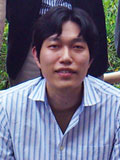 |
|
| Role: | Collaborators | |
|---|---|---|
| Title: | Creation and Functionalization of Peptidic Supramolecular Complexes | |
| Purpose: | In this research project, we create hybrid materials of artificial molecules and biomolecules for examination of intrinsic dynamic ordering behaviors of biomolecules. We attempt the construction of new nanoassemblies through utilization of intrinsic dynamic ordering abilities of oligopeptides and also supramolecular coordination techniques. Through such synthetic approaches, this research project will elucidate mechanisms and design principles of unique artificial dynamic ordering systems, and explore their functions. The new materials of this project will lead new trend in the integrated field of biomolecules and artificial systems. | |
Yasuteru Shigeta
| Center for Computational Sciences, University of Tsukuba Professor, Ph. D. |
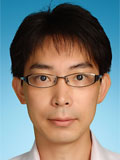 |
|
| Role: | Collaborators | |
|---|---|---|
| Title: | Theoretical studies on dynamical ordering processes of proteins by coarse-grained molecular dynamics for cumulant variables | |
| Purpose: | In this project, we develop statistical mechanics and coarse-grained molecular dynamics simulation method on the basis of the cumulant mechanics, which has been formulated by us as a novel dynamical system. For the former, a direct free energy minimization method both for position-momentum and the lower-order cumulant variables is invented in order to estimate free energy barrier for chemical reactions with high accuracy, but with low costs, by tracing out the irrelevant degrees of freedom. For the latter, a concept for the coarse-graining is enlarged to time-space variables, which are defined as cumulant variables corresponding to a molecular shape. The advantage of the present method over conventional ones is to derive coarse-grained force field from the atomic-scale one so that one can remove an arbitrariness of force field adopted in the actual calculation. Through the present work, we establish the molecular theory for protein complexes in which the dynamic ordering and destruction of them play important role in their biological functions. | |
Tomoya Tsukazaki
| Graduate School of Biological Sciences, Nara Institute of Science and Technology Associate Professor, Ph. D. |
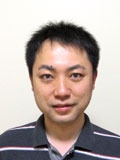 |
|
| Role: | Collaborators | |
|---|---|---|
| Title: | Construction of a new reconstitution system to visualize dynamic protein secretion system | |
| Co-Investigator (renkei-kenkyusha): | Yoshiki Tanaka Nara Institute of Science and Technology Assistant Professor, Ph. D. |
|
| Purpose: | In this research project, we focus on protein secretion via the Sec translocon, which is an essential process in the living cell. There are a great variety of assembly and disassembly of hetero-oligomer during protein secretion processes. The bacterial protein secretion can be occurred in vitro by using a mixture of membrane-embedded protein translocation channel, SecYEG (eukaryotic Sec61 homolog), driving motor SecA ATPase and a substrate protein. Based on crystal structures of Sec proteins, several functional analyses have been studied. However, the interaction and assembly of Sec proteins still remain unclear. Additionally, we do not know how large conformational changes occur during protein translocation. We aim to elucidate the time-dependent dynamic conformational changes in detail using a new developed reconstitution system and crystal structures of Sec complexes. | |
Yuuya Nagata
| Department of Synthetic Chemistry and Biological Chemistry Graduate School of Engineering, Kyoto University Assistant Professor, Ph. D. |
 |
|
| Role: | Collaborators | |
|---|---|---|
| Title: | Development of Chiral Oscillating System Based on the Interaction between Helical Polymer Catalysts and Their Non-racemic Products | |
| Co-Investigator (renkei-kenkyusha): | Sota Sato Tohoku University, Advanced Institute for Materials Research (WPI-AIMR), Associate Professor, Ph. D. |
|
| Sugiyama Masaaki Research Reactor Institute, Kyoto University, Professor, Ph. D. |
||
| Purpose: | Much attention has been paid to the development of the artificial dynamic ordering system based on the natural biomolecular system to understand the living systems at molecular level. We have reported that poly(quinoxaline-2,3-diyl), which can be prepared by a living polymerization of 1,2-diisocyanobenzenes, is a promising scaffold for chirality-switchable asymmetric catalysts. In our preliminary results, we also found that non-racemic small molecules can induce single-handed helical conformations of poly(quinoxaline-2,3-diyl)s. In this research project, we will develop a chiral oscillating system based on the interaction between helical polymer catalysts and their non-racemic products. Furthermore, collaborative researches with group members will provide deep insights into the mechanism of the chirality-switching of the helical polymer backbone. | |
Daizo Hamada
| Graduate School of Engineering and
Center for Applied Structural Science (CASS) Kobe University Associate Professor, Ph. D. |
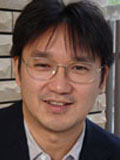 |
|
| Role: | Collaborators | |
|---|---|---|
| Title: | Mechanisms of self-organisations by immunoglobulin light chain based on structural fluctuations | |
| Purpose: | Biological phenomena are controlled by dynamic, intra- and inter-molecular self-organisation processes of numerous molecules including proteins. Thus, the analysis of structural and physicochemical basis of these self-organisations should be one of the most important key issues for understanding basic principles in the biological systems. Particularly, proteins can induce various self-organisation including “Folding”, “Complex Formation” as well as “Amyloid Formation. Immunoglobulin is the protein complex associated with light and heavy chains comprised by several immunoglobulin domains. Despite of intrinsic sequence variations, the protein can assume uniform structures which recognise numerous external molecules to form other types of molecular complex. Furthermore, AL amyloidosis is the disease characterised by the accumulation of amyloid fibrils formed by monoclonal light chain to induce multiple organ failure. Thus, the immunoglobulin can be a model system that realise “Folding”, “Complex formation” and “Amyloid Formation” by itself to clarify the interconnections between these self-organisation processes. In this research project, we characterise the divergent structural energy landscape including these three self-organisation processes by amyloidogenic immunoglobulin based on the molecular fluctuations revealed by structural biology and physical chemistry. These analyses will provide significant insight into the basic mechanism of self-organisation processes underneath the biological phenomena. These results can be further applied for innovation of unique strategy to inhibit the amyloid formation by immunoglobulin light chain. Such an analysis will be of significant impact for medical and sciences. |
|
Koji Harano
| Organization for Interdisciplinary Research Project Department of Chemistry, Graduate School of Science (Joint appointment) The University of Tokyo |
 |
|
| Role: | Collaborators | |
|---|---|---|
| Title: | Single-Molecule Imaging of Dynamic Processes for Organic Molecules by Real-Time Electron Microscopy | |
| Purpose: | Whereas a spatial- and time-average of molecular ensembles has been the conventional source of information on molecular structures, atomic resolution movies of single organic molecules and molecular clusters obtained by single-molecule atomic real-time transmission electron microscopy developed by us have recently emerged as a new tool to study the time evolution of the structures of individual molecules. The key of our technique is that we observed little sign of decomposition of the specimen molecules encapsulated in a single-walled carbon nanotube or attached to the outer surface of a carbon nanohorn as opposed to solid organic materials. The high specimen stability and the real-time scale motion enable us to study on the conformation of each C−C bond in single perfluoroalkyl fullerene molecules, dynamic conformational changes of biotinylated molecules, and structure of organic nanoclusters formed as a precursor of a crystal nucleus from supersaturated solution. In this research program, I will mechanistically study on dynamic processes where single- or many of organic molecules are involved, ranging from self-assembly of small molecules to formation of high-order structure of complex organic molecules. | |
Hiromitsu Maeda
| Department of Applied Chemistry, College of Life Sciences Ritsumeikan University Professor, Ph.D. |
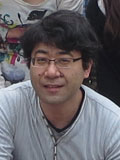 |
|
| Role: | Collaborators | |
|---|---|---|
| Title: | Formation of ion complexes based on bio-inspired π-electronic systems exhibiting dynamic ordering behavior | |
| Purpose: | Pyrrole, an important unit in biotic system, has an N site showing various interactions and a planar geometry as π-electronic system. Therefore, well-designed acyclic π-conjugated oligopyrroles would exhibit ion-binding behaviors, formation of supramolecular assemblies, and electronic and photophysical properties that differ from those of cyclic oligopyrroles such as porphyrins. Such background has driven us to propose this project, which aims at synthesis of pyrrole-based ion-responsive π-systems, examination of their dynamic behaviors, and control of resulting electronic and photophysical properties. During this project, we will thoroughly prepare ion-binding π-electronic molecules which exhibit fascinating dynamic behaviors, dimension-controlled assembling, and resulting properties. As one of the subjects, we will investigate chiroptical properties, such as circularly polarized luminescence, of folded π-electronic systems. | |
